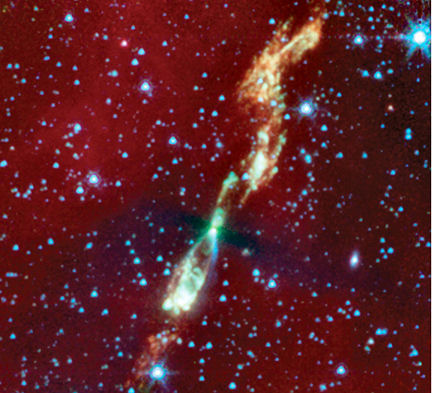A sunlike star’s early development
This infrared portrait of an embryonic sunlike star reveals an early, crucial step in the process of planet formation. According to most theories, the spinning cloud of gas and dust from which a star arises should begin to flatten as a planet-forming disk of material takes shape.

At the same time, twin jets of gas should shoot out perpendicular to the forming disk. The Spitzer Space Telescope image of this developing, dust-shrouded star, called L1157, provides the first clear evidence that an envelope has begun to flatten, Leslie Looney of the University of Illinois at Urbana-Champaign and her colleagues assert in the Dec. 1 Astrophysical Journal Letters. Residing about 800 light-years from Earth, the star is only a few thousand years old and may reveal what our own sun looked like at its birth 4.5 billion years ago. The red haze is dust, and white parts of the jets are the hottest regions.







